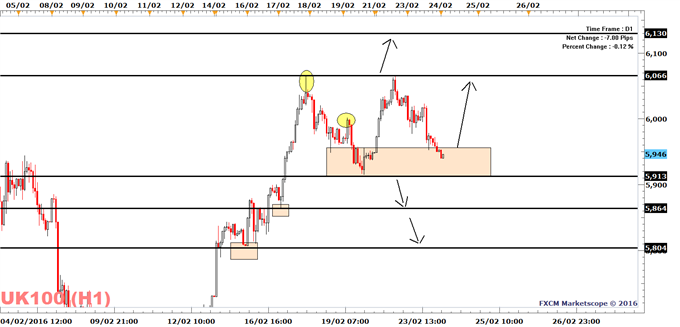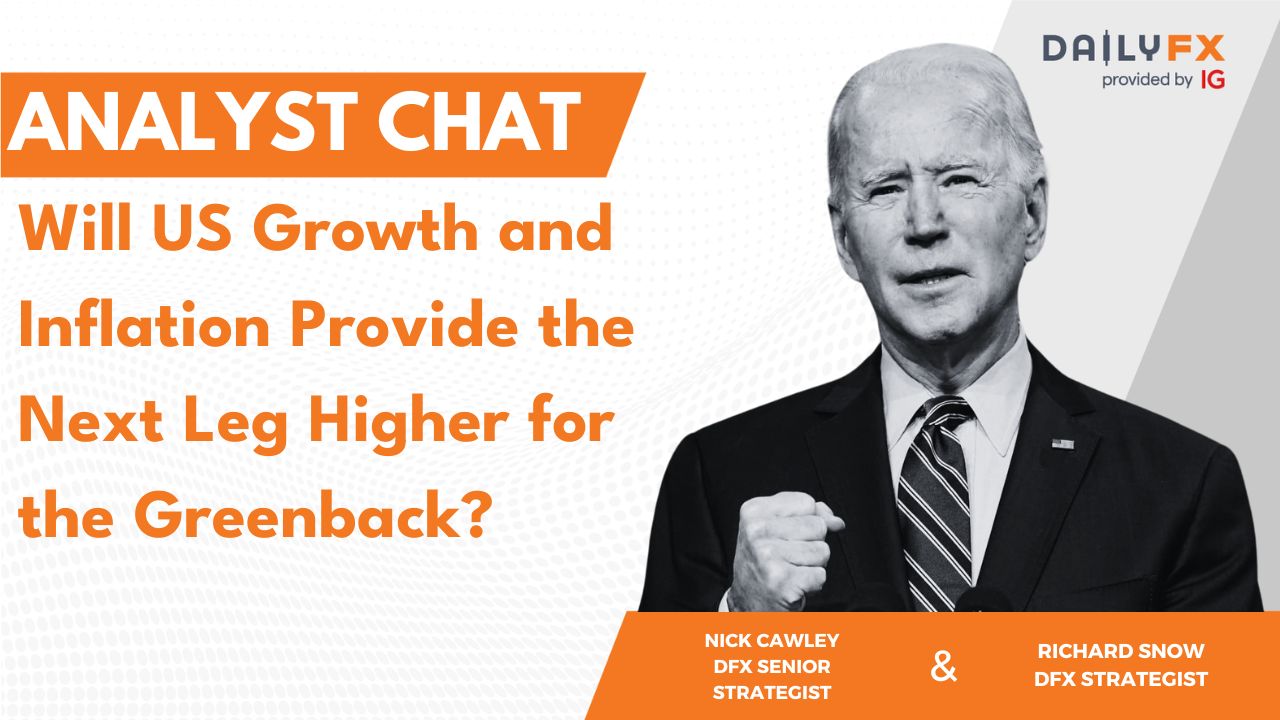Talking Points
- The FTSE 100 is at risk of trading lower in the days ahead if it breaches Friday’s low of 5913, but until this happens the trend is treated as bullish.
- The trigger behind the latest slide is yesterday’s soft U.S. Consumer Confidence, which slid to 92.2 from 98. A slide in crude oil prices is also adding to the pressure.
- Markit U.S. Services PMI is on tap today and may boost stocks on a higher than expected outcome with a Bloomberg News poll projecting a rise to 53.5 from 53.2.
See the DailyFX Analysts' 1Q forecasts for the Dollar, Euro, Pound, Equities and Gold
The FTSE 100 is at risk of trading lower in the coming days ahead if it breaches Friday’s low of 5913. If this were to happen, the short-term trend would turn bearish and traders will probably aim for the February 15 low of 5804.
For now the trend is bullish and if traders manage to keep price above Friday’s low, the FTSE 100 may reach last week’s high of 6066. A break to this level may generate further gains, lifting it to the February high of 6130.
U.S. Consumer Confidence Disappoints
A clear drop to the FTSE 100 occurred yesterday at 15:00 GMT, when the U.S. Consumer Confidence slid to 92.2 from 98. This was also lower than the 97.3 expected (Bloomberg News consensus poll) and is one of many other key reports which have disappointed this week.
Earlier this week, January manufacturing PMIs for the U.S., Eurozone, and Japan disappointed, and hinted at economic slowdown for the start of the year. These provide enough macro-economic reasons to send the FTSE 100 lower, yet as highlighted above, the trend remains bullish.
Crude Oil Slide Adds to The Pressure
Crude oil prices are under pressure as the Iranian oil minister called the deal between Russia, Saudi Arabia and others to freeze their crude oil production as a “laughable proposal” for Iran.
If Iran opts to join the deal they would freeze their production at 1 million barrels a day, while their competitors produce 10 million barrels a day according to the Oil minister, making the deal hugely disadvantageous for them.
This and news that Saudi Arabia is considering ruling out production cuts is weighing on crude oil prices and may pressure the FTSE 100 as its daily correlation to Brent Crude oil (FXCM:UKOIL) is at +0.73 over the last 6 months. This makes sense given that BP PLC and Royal Dutch Shell PLC make up 10% of the FTSE 100 index.
As crude oil has been brought back to the attention of the markets, today’s DOE U.S. Crude Oil Inventories will probably play a bigger role than usual. A Bloomberg poll projects an inventory build of 3.25m barrels from 2.14m over the past week.
Markit U.S. Services PMI is also on deck, and given the resilience of the services sector over the manufacturing sector, a higher than expected reading may prompt a higher DAX 30. U.S. New Home Sales is expected to decline by -4.4% MoM from 10.8% MoM but I don’t anticipate that traders will pay too much attention to it.
FTSE 100 | FXCM: UK100

Created with Marketscope/Trading Station II; prepared by Alejandro Zambrano
--- Written by Alejandro Zambrano, Market Analyst for DailyFX.com
Contact and follow Alejandro on Twitter: @AlexFX00
Struggling with Trading? Join a London Seminar







